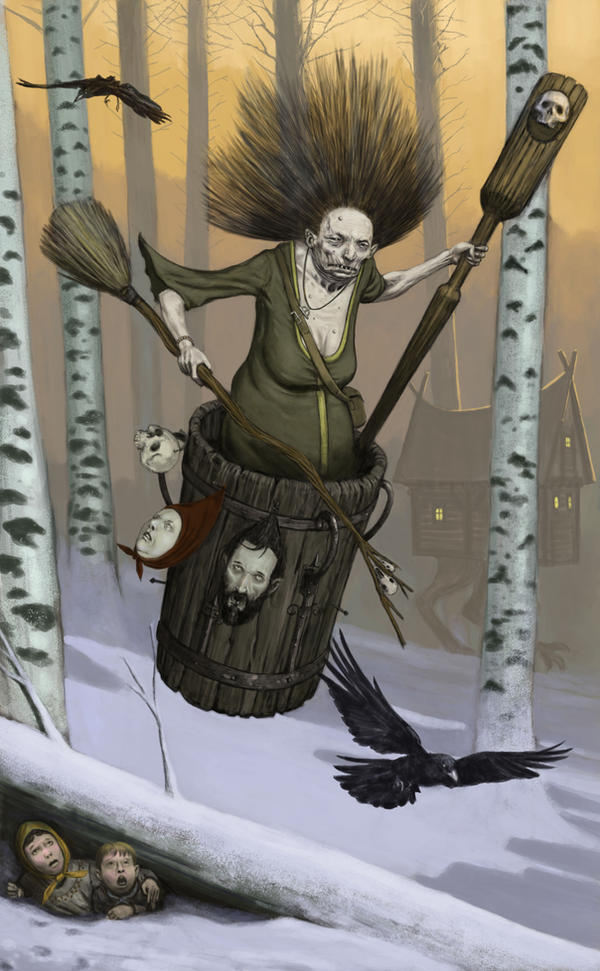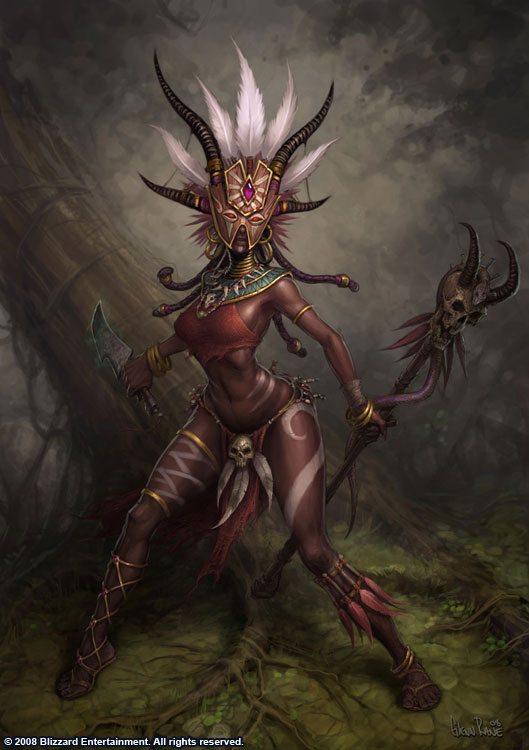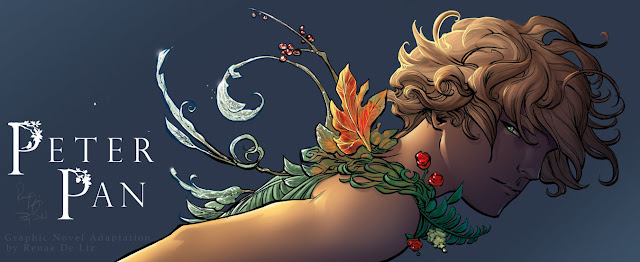Fairy tales were originally the stories of the peasants in societies which were divided into castes. So the heroes from fairy tales are different from other archetypal heroes in that they are rarely ever strong. Instead they use their kindness, hard work, cunning or simple luck to find victory.
The Fairy Tale Heroes lack of strength makes them a different sort of protagonist for most fantasy stories which involve at least some combat to achieve success.
 |
In "Spirited Away" the protagonist is a whiny weak little
girl who is pulled into the spirit world.
She can only succeed in saving her parents and getting
home by working hard and being polite. |
Further fairy tale heroes are typically forced into their adventure by desperation. They come under attack by other worldly forces, their loves are kidnapped, they are starving and without work. Whatever the reason they are peasants who have no choice but to risk everything in hopes of a better life.
A common theme in fairy tales than is for a young person to leave there home because his parents can no longer afford to feed them, giving them two options, take any job they can get or starve to death.
A movie I like to point to which has a great fairy tale style hero is "Transformers." While not a fairy tale the lead protagonist in it is exactly what I think of when I think of fairy tale heroes. He isn't a fighter, rather he's a clever outcast who is thrown into extreme circumstances and so is forced to become a hero.
Fairy Tale Hero Archetypes
Hard Working and Polite Hero
Building good relationships is the key to success. This is true between people but it is also true of folk religions and fairy tales are often tales of folk religions. The moral of many folk tales is not to complain around the spirits, to be polite, to work hard. Take for example the story of "Grandfather Frost" in which a young girl is left by her wicked step mother to die in the cold. As she sits there freezing to death an old frost spirit comes along and asks her how she is. Rather than complain that she is freezing, however, she is polite and tells the frost spirit she is fine, so he takes care of her and makes her rich.
 |
In "The Three Little Men in the Wood" the
protagonist only has a paper dress to wear but still
sweeps the walk way in the middle of winter
for three little fairy men. |
In modern times we see a similar theme in Miyazaki's film "Spirited Away" in which the protagonist Chihiro finds her self in the spirit world. In order to survive the spirit world a person must work hard, must be polite. This is in truth the only way that an ordinary human can survive in the spirit world with beings that are much more powerful than they are.
In the Russain Fairy Tale
“The Girl in the Well” a girl finds herself in the “Other World” which exists at the bottom of the well (think falling down a rabbit hole such as in "Alice in Wonderland"). The protagonist in this case is able to earn great wealth in this strange land by helping it's people with their problems such as cleaning up after sheep.
When faced in the night with an Alp (a shapeshifting elf which causes nightmares, drinks blood, and causes illness one could try to negotiate with the fairy like being by offering to serve it coffee in the morning.
Tricky Rouge Hero
Lest one get the false impression that being polite is the only way to be successful there are the Trickster Rouges.
Perhaps the most famous of these characters is Robin Hood who robbed from the rich to give to the poor. Yet despite his fame he isn't representative of all of these heroes, many of whom robbed from the rich to give to themselves. In “
Thumbling as Journeyman” the Thumbling helps some bandits rob a royal treasury in order to get rich himself, while also helping the bandits become rich as well.
Clever Rouges are the heroes of heist stories which have always been popular. Their morality may be questionable at times but most people love to read about them anyways. In modern films we usually make the targets of such criminals rich, greedy and nearly criminal themselves in order to forgive the rouges their theft. It was rare for this to be stated overtly in fairy tales.
Its never stated that the Giant in
“Jack and the Beanstalk” did anything to Jack, who was trespassing. There is, however, the assumption that the giant, being a man eating giant, deserves to be robbed.
Things are often left unsaid in fairy tales because there was an expectation that everyone had an understanding of the character archetypes with no explanation needed.
For example, in the Yupik tale
“The Raven, The Sun, The Moon and the Stars” Raven uses his magic to steal the sun, moon and stars from the deity who owns them. He does this to help humanity who has no light without these things in the sky. It's easily assumed than that because the deity is hording the light of the sky for himself he is greedy and deserves to be robbed.
Outcast Trickster Hero
Every era has a group of people who have fallen through the cracks of society. Becoming impoverished through no fault of their own.
In the industrial revolutions tailors found their job replaced by machines and factories. So there were a lot of previously skilled workers had no work. This is why trailers of often desperate travelers in fairy tales.
“
The Valiant Little Tailor” tells the tale of a Tailor who sets out and through trickery and cleverness is able to defeat giants and unicorns in order to marry the kings daughter.
Poor soldiers and veterans are another common character within this archetype. For a long time soldiers were only paid in the right to loot. Yet because they had traveled to distant lands they often new things no one else did. Further they were brave and strong after years of war.
The hero of “
Boots of Buffalo Leather” is a soldier who has learned magic on his journey. Through the use of this magic and a bit of trickery on his part he is able to become wealthy.
Going back to "Transformers" we see the Protagonist as a similar sort of character. An outcast in the sense that he is a geek, teased by his peers. He gets the girl and saves the day by being clever and of course brave. In the third movie he takes on the role of new college graduate as his form of outcast, who much like the tailors of old fairy tales are the skilled people of society who can't get jobs.
The Trusting Fool or Outcast Hero
The comedic relief of the hero world, trusting heroes can also take on a serious role. They are one of the more popular archetypes in Japanese anime which still views trust and friendship as important moral lessons.
It is trust and an ability to make friends that allow these heroes to succeed where others would fail, even though these heroes are typically portrayed as foolish and weak.
One of the oddest portrayals of this protagonist type is in "
The Fool and the Birch Tree." In this story the protagonist trusts a birch tree which he believes is talking to him. So he sells his cow to the tree but is later able to find a lot of money within the tree itself.
Jack from "Jack and the Beanstalk" starts out as a trusting fool when he also trades his cow to a strange little man for some magic beans.
Born Under a Lucky Star
Many protagonists have no actual qualities which help them succeed. They don't trust the right people, think cleverly, or do really much of anything. Rather they succeed purely on luck. Cinderella for example may have worked hard, but doing so got her no where closer to her goal. She was just lucky that a fairy was looking out for her.
The Selfish Hero
Although a rare character in fairy tales, The Selfish Hero occurs in one of the more popular fairy tales of “The Frog Prince” in which the Princess refuses to keep her promise to the frog and ultimately sets him free by trying to kill him. We also see a selfish hero character in "The Mari and the Lime Tree" in which a man threatens to kill a tree spirit if it doesn't make him rich.
Selfish heroes are hard for many people to sympathize with because they succeed by being selfish, by being spiteful and greedy and all the things heroes aren't supposed to be. One could argue that they are lucky as well as selfish because most people who act that way in fairy tales end up dead... or worse.

































